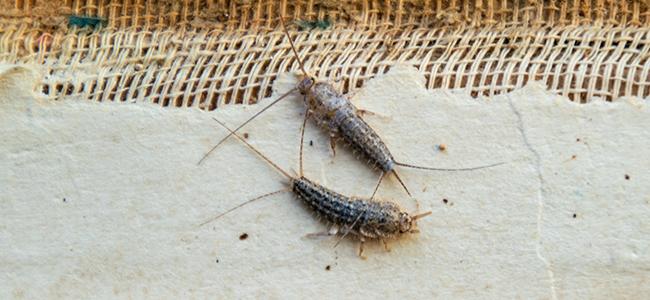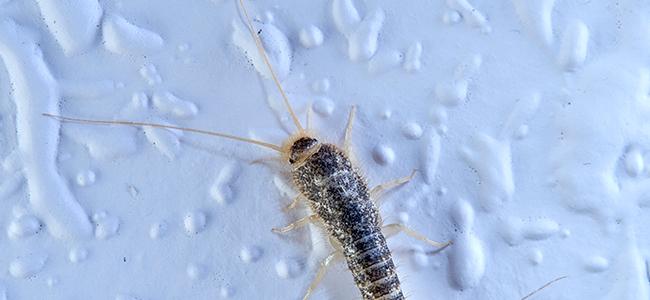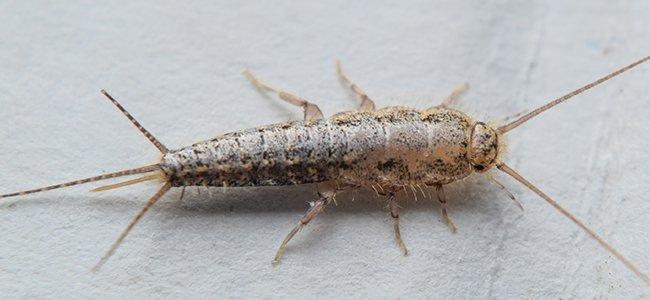
Silverfish Prevention Tips For Maryland Property Owners
01/25/2022
Silverfish (Lepisma saccharina) are small insects often referred to as “carpet sharks” or as “bristletails” because of thei...
READ MORE >
Teardrop shaped, blue, gray, or silver, and growing to be up to nineteen millimeters long, silverfish are some of Maryland’s top common household pests. Their wiggle like movement gives them the appearance of a fish and their six legs distinguish them from centipedes, for which they are often mistaken. A silverfish is white when it first hatches and turns to a silvery color as it grows older. The silverfish has a lifespan that ranges anywhere from three to four months. They can lay one to three eggs a day; and depending on the species, they may have clusters of two to twenty. Unlike most insects, these pests can reproduce year-round. Because these pests are small and quick, they are often missed and don't become noticed until the infestation grows exponentially.
These pests can live in almost any environment; but prefer dark, damp areas with high humidity such as basements, attics, kitchens, and bathrooms. These spaces provide the moisture and humidity needed to properly develop and survive. They love to feed on carbs such as sugars and starch. They will eat anything from food in pantries to shampoos, and dead insects to the glue in the binder of a book. They are especially attracted to paper and damp clothing. They have even been spotted in unopened food packages. Although these pests are harmless to humans, they are not pests you want in your home. They are known for their destructive eating habits; holes in clothing, paper, and books are all signs of a silverfish infestation. Silverfish are not partial to one certain type of fabric or material. They will eat anything from cotton to silk. The same goes for paper. Paper in a book is certainly one of their favorites, but magazines and wallpaper will satisfy them as well.
As mentioned before, silverfish can live in just about any environment but prefer areas with high humidity, which allows their nymphs to develop faster. Monitoring humidity levels in dark places and sealing any holes or cracks are both good prevention tips. Checking pipes for leaks under sinks and in basements will also help prevent a silverfish infestation. If an infestation has already been established, calling a professional after the first sign of a silverfish is the safest and most effective thing to do. DIY traps and insecticides sold in stores only kill individuals and not their eggs. This may give spurts of relief, but another infestation will soon follow. Both the egg and the adult need to be treated in order to keep an infestation from happening again. Here at American Pest, we provide high-quality year-round service to many Maryland homes. We will come inspect the situation and come up with a customized plan that best suits you and your home. Don’t let silverfish lurk throughout your home when help from American Pest is only a call away.

01/25/2022
Silverfish (Lepisma saccharina) are small insects often referred to as “carpet sharks” or as “bristletails” because of thei...
READ MORE >

09/10/2021
As a homeowner in Maryland, there are a variety of pest control problems that you’ll need to deal with. However, when you try to deal with th...
READ MORE >

07/27/2021
For many homeowners, silverfish are the least of their concerns. They might appear every now and then, but don’t seem to cause much noticeabl...
READ MORE >

03/22/2018
Silverfish are those silvery scaly looking insects that are about 1/2” long, have long antennae, and 3 long thin tails. They like to hide in ...
READ MORE >

Protect your home and family from nuisance and potentially damaging pests with a Preferred Care home pest control plan. Starting at $49/month

Don't let the bed bugs bite a second longer. Contact American Pest for the most comprehensive bed bug control in the industry. Learn More

Our certified rodent control pros will put an end to your frustration by getting rid of rats and mice inside your home. Learn More

Say goodbye to wood-destroying termites in your home when you contact American Pest for expert termite control. Learn More

Trust American Pest to deliver professional backyard tick control services that are guaranteed to get results. Learn More

Don't spend the warm-weather season indoors, find out how American Pest's professional treatments get rid of mosquitoes. Learn More
Fill out the form and recieve feedback in less than 5 minutes. For immediate service please call.